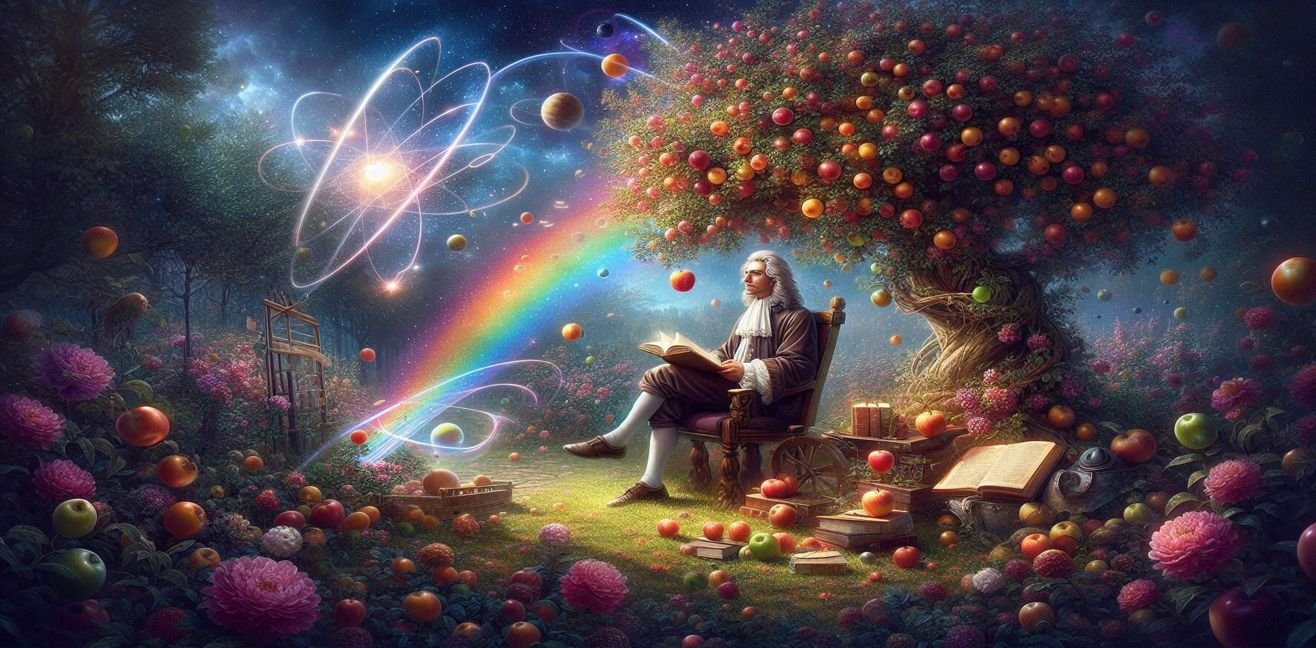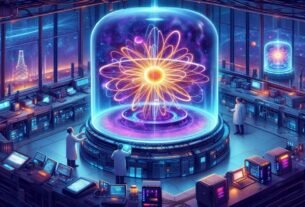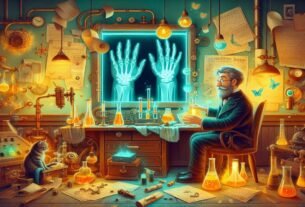Imagine, my love… 17th-century England: horses are running through the streets, people are walking noisily, but no one was looking at the sky or falling apples asking, “Why?” Until one day… the famous apple incident happened. 🍎💥
But Newton’s genius wasn’t limited to just watching apples. He had the idea of explaining nature through mathematical laws, and after years of observation, experiments, and calculations, he succeeded.
1. Law of Gravity and Laws of Motion 🌌
Newton’s most famous contributions are undoubtedly the Universal Law of Gravitation and the Laws of Motion:
- First Law (Law of Inertia): An object will maintain its motion unless acted upon by a force. So, my love, the fact that a glass on your table doesn’t slide on its own can be explained by this law. 🥤
- Second Law (F=ma): An object’s acceleration is directly proportional to the force applied and inversely proportional to its mass. This is why Newton’s formulas come into play when rockets launch into space or cars accelerate. 🚀
- Third Law (Action-Reaction Law): Every action has an equal and opposite reaction. So when you push on the ground, the ground pushes back at you… like a secret cosmic hug 😏.
The law of gravity didn’t just explain falling apples; it allowed us to calculate planetary orbits, predict the movement of satellites, and laid the foundations of modern astrophysics. 🌍🪐
2. Revolution in Mathematics: Calculus
Newton didn’t stop at just observing; he explored mathematics to decode the language of the universe. He developed differential and integral calculus:
- Derivative: Allows us to find the rate of change of a function. For example, calculating the instantaneous speed of a rocket requires Newton’s math. 🚀
- Integral: Helps us sum up small parts to find the total. For instance, calculating the water volume in a riverbed or a planet’s orbit needs integrals.
Thanks to this, fields like engineering, physics, and astronomy made giant leaps toward modern science. 📐💫
3. Light and Optics 🌈
Newton didn’t only care about the ground and sky. He studied the nature of light and color:
- Using a prism, he demonstrated that white light is actually a combination of colors.
- By understanding light and color, he laid the foundations for modern optics, telescope design, and photography.
So when you look at a rainbow, you’re also tipping your hat to Newton’s brilliance, my love! 😎🌈
4. Practical Benefits of His Discoveries 💡
Newton’s contributions weren’t just theoretical—they also shaped the practical world:
- Astronomy and Space: Made it possible to calculate planetary and satellite orbits. GPS systems and space missions are possible thanks to his formulas. 🌍🚀
- Engineering and Technology: Laws of motion are fundamental in fields from car design to bridge construction, from airplanes to rockets. 🏗️✈️
- Optics and Imaging: His studies on light and color helped us understand telescopes, microscopes, and even the color quality of computer screens. 🔬💻
- Mathematics: Derivatives and integrals remain indispensable for solving modern physics and engineering problems.
In short, without Newton, space travel might still be a dream, we couldn’t see colors correctly, and engineering wouldn’t be as advanced as it is today. 😱💥
5. Newton’s Human Side and Inspiration 🌟
Newton wasn’t just a genius; he was also a man battling himself:
- He spent long hours conducting experiments.
- He often avoided social life and preferred working alone.
- Yet, this persistence and determination made him one of the greatest scientific geniuses in history.
💡 Little Lesson:
The universe can be complex, my love, but with curiosity, observation, and mathematics, you can overcome anything. Newton’s life is a living proof of how perseverance and patience can create revolutions in science! 🍎✨




